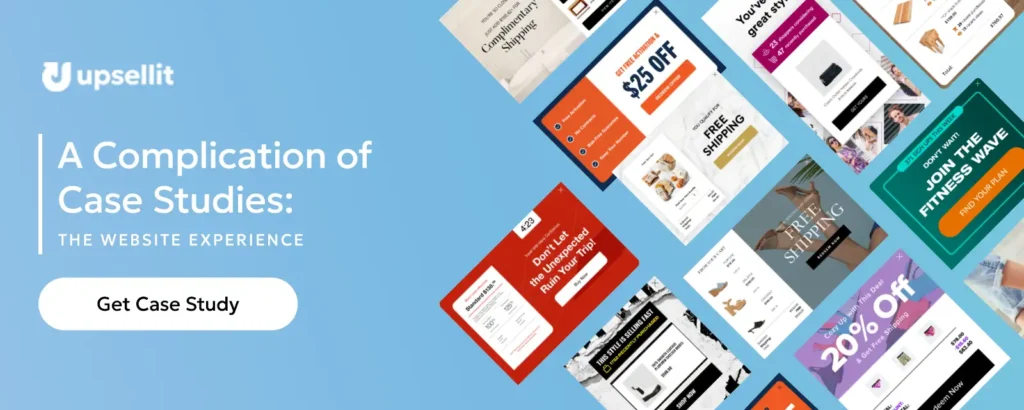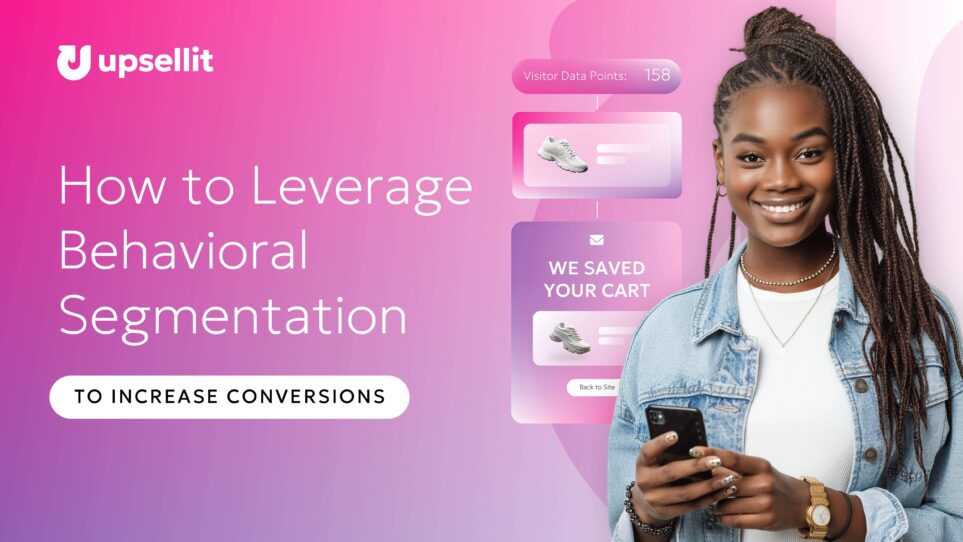The past few years have been a whirlwind for data-driven ecommerce. Retailers have more granular information than ever before about their shoppers, repeat customers, and even those who never make a purchase. 76% of shoppers prefer brands that offer personalized experiences and leveraging behavioral segmentation gives brands a huge opportunity to do just that. But all that data is only helpful when it’s put to good use.
Behavioral segmentation is one of the most powerful tools at a retailer’s disposal. This strategy allows you to tailor your marketing efforts based on how users interact with your brand, ultimately enhancing their experience and driving more sales. Let’s dive into how you can effectively leverage behavioral segmentation to achieve these goals.
Understanding Behavioral Segmentation
As you can probably guess, behavioral segmentation is built on an understanding of a shopper’s…well…behavior. It involves categorizing shoppers based on their actions, preferences, and decisions when interacting with your website or products.
Unlike demographic or geographic segmentation, which groups shoppers based on static attributes, behavioral segmentation focuses on dynamic behaviors like purchase history, website interactions, and engagement patterns.
By analyzing these behaviors, marketers can create highly targeted campaigns that resonate with specific shopper segments. This approach does more than just enhance conversion rates: it strengthens shopper relationships by delivering relevant content and offers at the right time.
Behavioral Segmentation Benefits
Implementing behavioral segmentation offers several key advantages. We’ve broken them down below.
Improved Ability to Attract and Retain Shoppers
By understanding the behavioral patterns and preferences of your shoppers, you can craft personalized experiences that resonate with their unique needs. This targeted approach not only makes your offerings more appealing, but also enhances the likelihood of converting first-time visitors into repeat customers.
Effective behavioral segmentation enables you to fine-tune your marketing strategies, ensuring that you consistently attract and retain shoppers who are more engaged with your brand.
Enhanced User Experience
Tailoring your recommendations and messaging to align with individual shopper behaviors makes the shopping process smoother and more enjoyable. When users receive personalized suggestions that match their interests, they are more likely to have a positive interaction with your brand.
This enhanced user experience not only boosts satisfaction, but also encourages shoppers to return, knowing they will find a shopping experience that caters specifically to their preferences.
Increased Customer Satisfaction and Loyalty
By anticipating and addressing shopper needs with relevant solutions, you significantly improve their overall satisfaction with your brand. This proactive approach fosters a sense of value and appreciation among shoppers, which can lead to higher levels of loyalty. Satisfied customers are more inclined to make repeat purchases and advocate for your brand, helping to establish a strong, loyal customer base that supports your business long-term.
Increased Revenue and Profitability
Focusing on high-value shopper segments with personalized offers can dramatically boost your conversion rates and average order values. By targeting those who are most likely to respond to tailored promotions, you not only drive immediate revenue growth, but also build a more profitable business model. Effective behavioral segmentation helps optimize your marketing spend and maximize the return on investment, ultimately contributing to greater profitability.
Types of Behavioral Segmentation
Purchase Behavior
Segmenting shoppers by their purchase behavior, including their buying patterns and history, helps you tailor your marketing efforts to different types of customers.
For instance, you can design targeted campaigns for frequent buyers to enhance their loyalty, craft onboarding experiences for first-time purchasers to drive engagement, and implement recovery strategies for shoppers who have abandoned their carts. By addressing each segment’s specific behavior, you can optimize your marketing efforts and boost conversion rates.
Example: An online fashion retailer segments customers who frequently purchase women’s shoes. They send personalized recommendations for new arrivals in the same category, increasing the likelihood of repeat purchases.
Occasion and Timing-Based
Targeting shoppers based on specific occasions, such as holidays or birthdays, and timing, like seasonal promotions or flash sales, allows you to deliver highly relevant offers.
This approach ensures that your marketing messages align with key moments in your shoppers’ lives, making them more impactful and timely. By aligning your campaigns with these occasions, you can capture your audience’s attention at the optimal time, driving higher engagement and increased sales.
Example: A flower delivery service sends reminders, offers and discounts leading up to Mother’s Day, capitalizing on the occasion to boost sales among shoppers likely to make purchases for their mothers.
Benefits Driven
Segmenting shoppers based on the benefits they seek from your products or services enables you to tailor your messaging to their specific needs. For example, price-sensitive shoppers may respond better to discounts and special offers, while quality-conscious buyers might be more interested in detailed product features and customer reviews. This targeted approach ensures that your marketing resonates with each segment’s unique motivations, enhancing overall effectiveness and customer satisfaction.
Example: A tech gadget retailer offers different product bundles based on shopper preferences—such as gamers who value performance over price, or budget-conscious shoppers who prioritize affordability.
Customer Loyalty
Identifying loyal customers and rewarding them with personalized loyalty programs and exclusive offers is essential for fostering long-term relationships. By tailoring rewards and incentives to individual preferences and behaviors, you can make your loyal customers feel appreciated and valued. This approach not only encourages repeat purchases but also strengthens customer retention, turning satisfied buyers into brand advocates who support and promote your business.
Example: An airline offers upgraded seats or bonus miles to frequent flyers, encouraging them to continue booking flights with the airline.
Each type of segmentation provides unique insights into shopper behavior, enabling you to tailor your marketing strategies accordingly.
Best Practices for Implementing Behavioral Segmentation
Successfully implementing behavioral segmentation requires a strategic approach.
Collect Relevant Data
Utilize a variety of tools to gather and analyze comprehensive behavioral data, including website interactions, purchase history, and social media engagement. This data provides valuable insights into shopper preferences and habits, enabling you to understand their needs better and refine your marketing strategies. By effectively collecting and analyzing this information, you lay the foundation for more targeted and impactful marketing efforts.
Define Clear Segments
Based on the collected data, create distinct segments that group shoppers with similar behaviors and preferences. These segments should reflect meaningful differences in how shoppers interact with your brand, allowing you to tailor your strategies more precisely. Clear segmentation helps in crafting more relevant marketing messages and improving overall engagement with your audience.
Create Personalized Campaigns
Develop marketing campaigns that are specifically designed to address the unique needs and motivations of each shopper segment. By personalizing your messaging and offers, you ensure that each campaign resonates more deeply with its target audience, leading to higher engagement and conversion rates. Tailored campaigns help to build stronger connections with your shoppers and enhance the effectiveness of your marketing efforts.
Automate When Possible
Leverage marketing automation tools to deliver personalized messages at scale, based on real-time shopper behavior. Automation can streamline your processes and ensure that each customer receives timely and relevant communications, enhancing their overall experience. Upsellit offers a comprehensive suite of solutions that analyze shopper behavior to deliver personalized engagements, driving more conversions and improving satisfaction.
Tips for Creating Effective Behavioral Segmentation Campaigns
Segment Based on Customer Journey Stage
Tailor your messaging according to the specific stage of the customer journey, whether shoppers are casually browsing, actively considering a purchase, or ready to finalize a transaction. By aligning your communication with their current stage, you can provide relevant information and incentives that drive them towards conversion. This targeted approach ensures that your marketing efforts are more effective and resonate with shoppers at the right moment.
Example: If a shopper has just entered your site, giving them product recommendations immediately on entry may be less helpful than waiting to see what product categories they explore. Similarly, waiting until the cart stage to let a shopper know about a major sale is likely to delay or even stop a shopper from converting.
Utilize Predictive Analytics
Leverage predictive analytics to anticipate future shopper behavior by analyzing past interactions and emerging trends. This proactive approach allows you to engage shoppers with tailored messages and offers before they even reach key decision points. By using data-driven insights to forecast behavior, you can enhance your marketing strategies and stay ahead of your customers’ needs.
Example: If a shopper’s past buying behavior tends towards sale and clearance items, it may not make sense to up-sell them to a more expensive alternative.
Iterate and Optimize
Continuously refine your segments and marketing campaigns based on performance metrics and customer feedback. Regularly analyzing how different segments respond to your efforts allows you to make data-driven adjustments and improve campaign effectiveness. This iterative process helps in fine-tuning your strategies for better results and ensures that your marketing remains aligned with evolving customer preferences.
Example: If you notice that some repeat customers are purchasing the same products at similar intervals, such as with wellness supplements, it might make sense to offer a small discount for signing up for automatic refills each month.
Examples of Successful Behavioral Segmentation Campaigns
- Amazon’s personalized recommendations: Amazon analyzes browsing and purchase history to suggest products relevant to each shopper’s interests, significantly boosting sales. These recommendations are the catalyst for 35% of Amazon’s total sales.
- Netflix’s content recommendations: Netflix uses viewing history and preferences to personalize content suggestions, keeping users engaged and reducing churn.
- Sephora’s ‘Beauty Insider’ program: Sephora segments customers based on purchase behavior and offers personalized rewards, exclusive discounts, and early access to new products, enhancing customer loyalty.
While these are large-scale examples from major brands, you don’t have to be an ecommerce giant to utilize behavioral segmentation. Here are a few easy-to-implement strategies that can have a major impact.
Offer Recommendations at the Right Time
You can enhance the power of product recommendations by recommending products to shoppers that are already in a “buying mood” with an active cart. Upsellit’s MiniCarts use behavioral parsing and advanced machine learning to dynamically recommend complementary items right when a shopper adds something to their cart. The MiniCart displays the item they just added, along with three personalized recommendations to catch shoppers when they’re in the mood to buy.
Engage Users Through Their Inbox
If a shopper spends most of their time in just a couple of categories, sending personalized announcements about new releases and special offers pertaining to those categories are a great way to bring them back to your site and build loyalty.
Correct Coupons for Budget-Conscious Shoppers
If a shopper frequently uses coupon codes when they’re on your site, it can be especially frustrating for them if the code they have doesn’t work. Instead of risking abandonment, you can use a tool like Upsellit’s Coupon Corrector to automatically serve them a working coupon code. This small personal touch can make a huge difference in securing loyalty.
Conclusion
Behavioral segmentation is a powerful tool for ecommerce marketers looking to maximize conversions and drive revenue growth. By understanding and responding to shopper behaviors in real time, you can create personalized experiences that resonate with your audience and drive meaningful results.
Take the next step in enhancing your marketing strategy by implementing behavioral segmentation. Start by analyzing your shopper data and identifying key segments to target with personalized campaigns. Remember, the more tailored your approach, the higher your chances of success in today’s competitive ecommerce landscape.
Ready to explore the power of behavioral segmentation? Download Upsellit’s Website Experience Case Study to discover how integrating advanced recommendation and abandonment solutions and can significantly increase your average order value, boost overall revenue, enhance conversions, and give shoppers a great experience.

